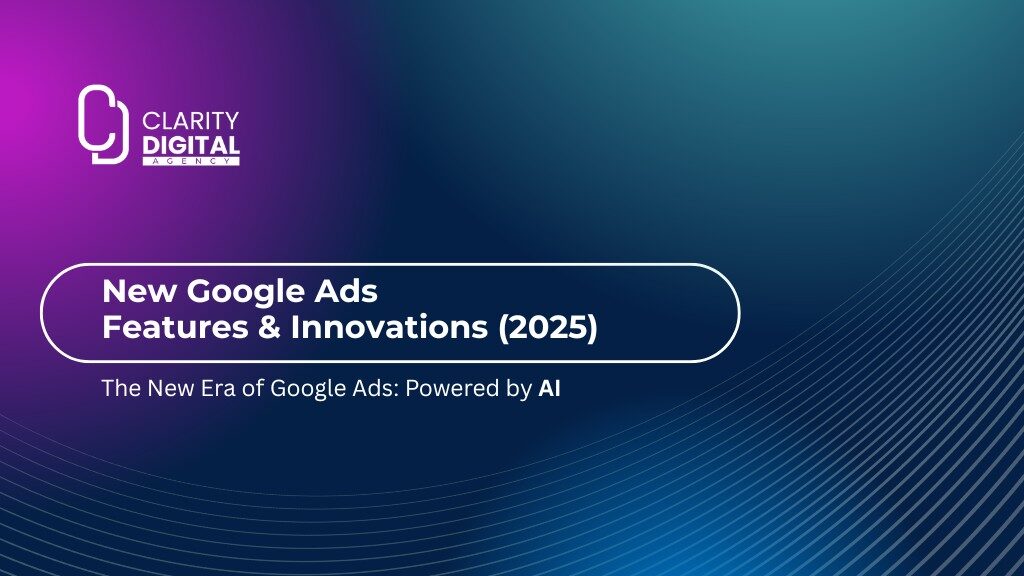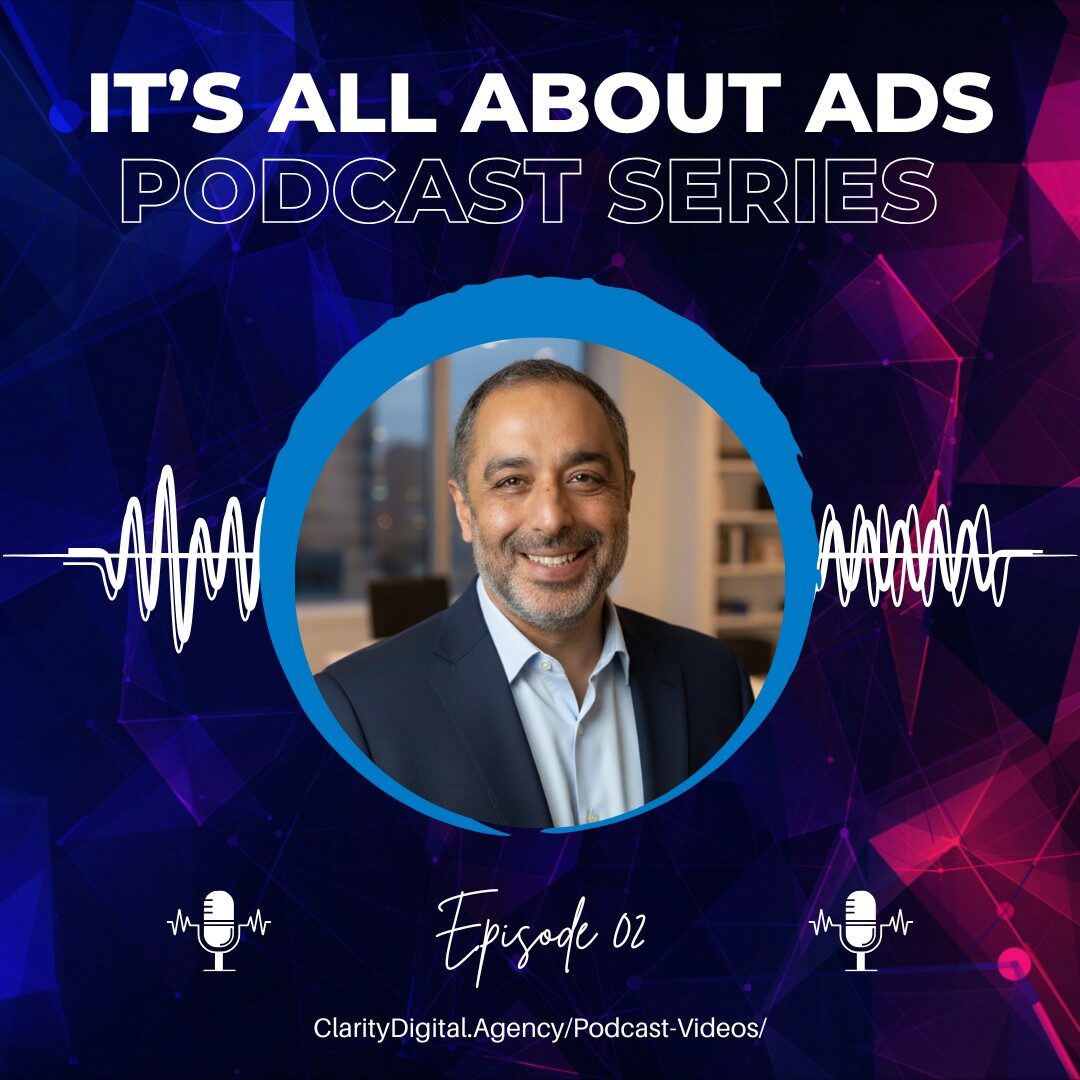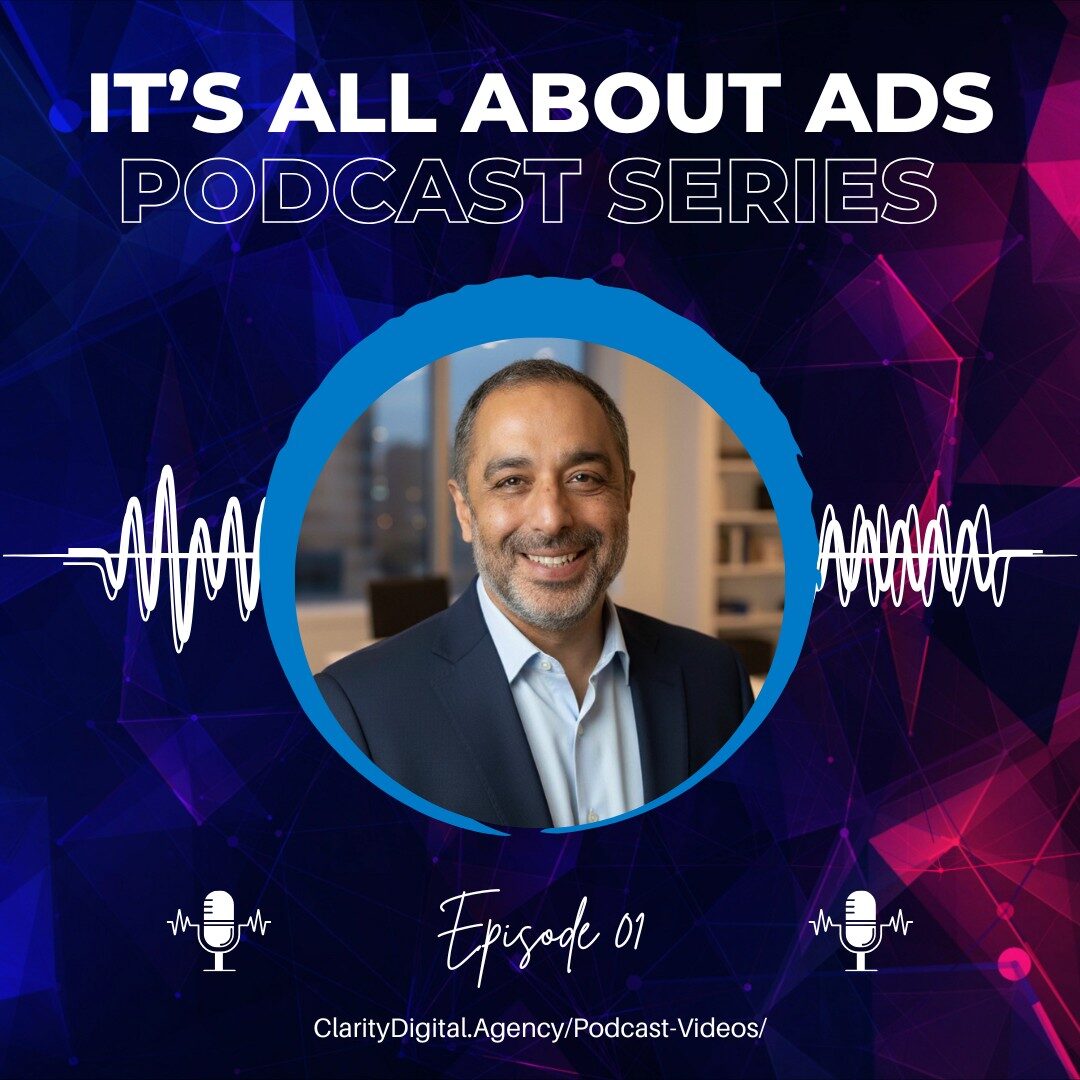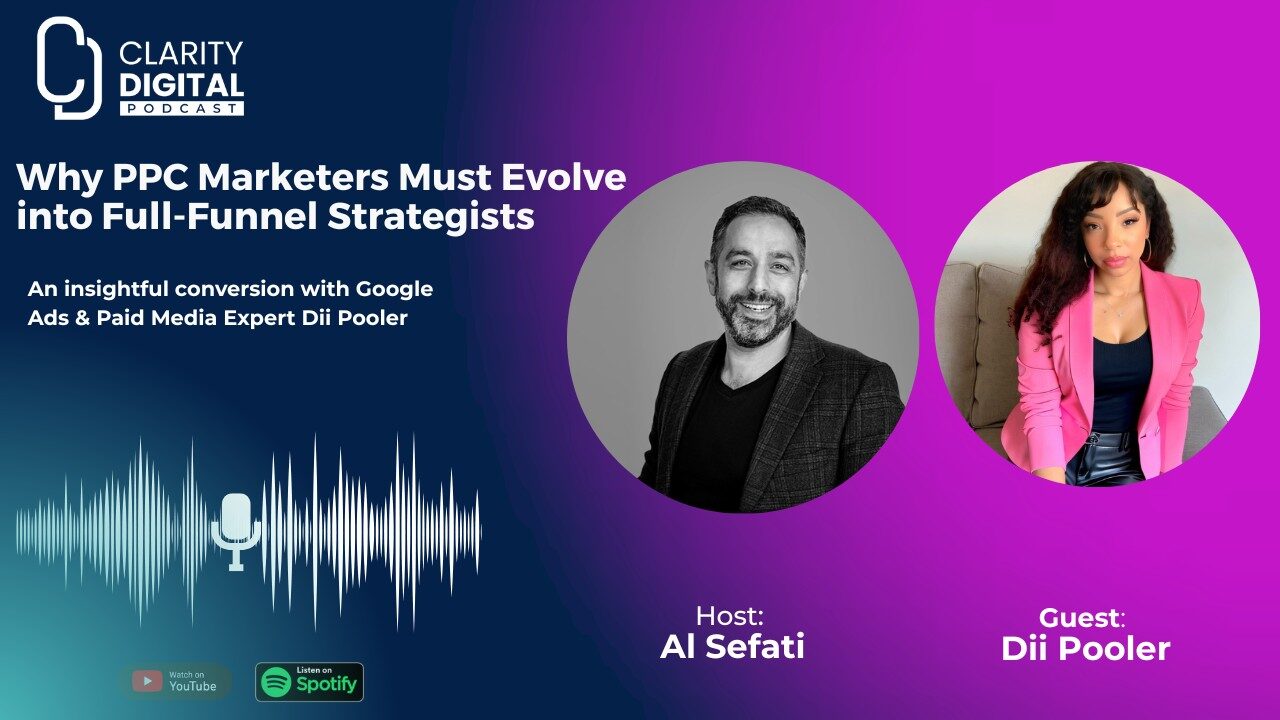The New Era of Google Ads: Powered by AI
In 2025, the world of paid media is rapidly evolving. For in-house marketers like you, keeping up with these changes isn’t just about optimizing campaigns; it’s about strategically positioning your brand for continued success. Google’s ad ecosystem is transforming at a rapid pace, driven by advancements in automation, audience targeting, and ad delivery. Google’s 2025 campaign overhaul, particularly with the introduction of Demand Gen Campaigns, has redefined the rules of the game.
The implications are clear: marketers who adapt quickly and strategically will unlock significant opportunities across YouTube, Gmail, and Discover. Those who fall behind may face rising costs and reduced ad relevance. This article provides a practical breakdown of these innovations, helping you understand how to enhance your brand’s visibility, improve results, and drive long-term growth in a landscape increasingly influenced by AI.
Google Ads Campaign Innovations (2025): An Overview
The big story for 2025 is consolidation. Google has officially retired Discovery and Video Action campaigns, combining their most effective features into a new, unified campaign type: Demand Gen.
This isn’t just a simple name change. It signifies a major shift towards AI-driven campaign management, seamless full-funnel audience integration, and more sophisticated creative strategies. The platform now offers wider reach, greater personalization, and smarter reporting capabilities than ever before.
This shift is crucial. As an in-house marketer, embracing these updates is essential to maintain or improve your campaign performance. With unified audience targeting, richer creative assets, and cross-channel delivery, 2025 emphasizes integration, automation, and creative quality.
Demand Gen Campaigns: The New Standard
Demand Gen Campaigns are now at the heart of Google’s strategy for multi-channel engagement. They seamlessly combine display, video, and native ad formats into a single campaign type that runs across YouTube, Discover, and Gmail. This allows you to reach users in their preferred content environment with creative that’s tailored to their intent and the specific platform they’re using.
Mastering Demand Gen is now a necessity for any in-house marketing team looking to maximize their Google Ads efforts.
Why Google Ads Demand Gen Matters:
- Frictionless Reach: Connect with your target audience across multiple channels without duplicating efforts.
- Creative Flexibility: Utilize image, video, and carousel assets in a streamlined, AI-optimized setting, allowing Google’s system to deliver the best-performing creative.
- Audience Intelligence: Leverage unified targeting to reduce wasteful overlap and increase your return on ad spend (ROAS).
Action Item for In-House Marketers: If you’re currently running Discovery or Video Action campaigns, it’s time to review them and plan your transition to Demand Gen. Identify which existing creative assets can be repurposed and where you might have gaps in format coverage for the new campaign type.
Sunsetting Discovery and Video Action Campaigns: What It Means for You
The retirement of Discovery and Video Action campaigns is more than just discontinuing a product. It reflects Google’s belief that isolated campaign types can hinder performance in today’s omnichannel world. Demand Gen integrates the best features from its predecessors while adding:
- Smarter Automation: Google’s AI now manages ad delivery based on past performance and real-time intent signals, simplifying campaign management for you.
- Unified Optimization: Instead of managing separate campaigns for each channel, you get a complete, holistic view of your performance, making optimization much more efficient.
- Expanded Inventory Access: You can now advertise across more placements without the need for redundant campaign setups.
Continuing to rely on older campaign types means you risk losing visibility and efficiency as Google shifts its focus entirely to Demand Gen formats.
Unified Audience Targeting Across Google Properties
One of the most significant improvements in 2025 is the ability to apply audience segments across YouTube, Discover, and Gmail from a single Demand Gen campaign. This unification reduces wasteful overlap, centralizes your data usage, and helps ensure more consistent messaging across various touchpoints.
Your Strategy for Unified Targeting:
- Leverage CRM Data: Don’t underestimate the power of your own customer data. Use first-party data to create highly effective custom segments.
- Behavioral Layering: Combine interest targeting with remarketing and in-market audiences to create a powerful targeting strategy that captures users at different stages of their buying journey.
- Demographic Precision: Refine your targeting by age, gender, location, and device usage to ensure your ads are seen by the most relevant audience.
By adopting this integrated audience strategy, you can significantly improve your prospecting and retargeting efforts, ultimately leading to lower acquisition costs.
Creative Strategies: Carousel, Image, and Video Synergies
With Demand Gen, crafting effective ads goes beyond simple creative production. Your assets become dynamic inputs for Google’s machine learning. This means you’ll need to build a robust library of carousel, image, and video assets that work together within a flexible framework.
Carousel Ads: Swipe Into Storytelling
Carousel ads allow you to tell compelling stories or showcase multiple products using swipeable cards. They are particularly effective for:
- Multi-product e-commerce campaigns: Highlight various items from your catalog.
- Service explanations: Break down complex services into easy-to-understand steps.
- Sequential messaging: Build trust and educate your audience through a series of engaging visuals.
Image and Video Synergy
Demand Gen leverages both images and video. Google’s system intelligently tests and delivers the most effective format based on user behavior, leading to improved engagement and conversions.
Dynamic Asset Integration
You can now combine images, headlines, long headlines, videos, and calls to action (CTAs). Google’s AI automatically creates high-performing variations based on audience signals and platform behavior, taking much of the guesswork out of A/B testing.
Action Item for In-House Marketers: Start building flexible libraries of diverse creative formats, lengths, and styles. Consider investing in modular production, which allows for easy updates and variations of your creative assets over time.
Cross-Channel Opportunities for Your Brand
Today’s Demand Gen campaigns seamlessly operate across YouTube, Discover, and Gmail, with each platform offering unique opportunities at different stages of the user journey:
- YouTube: Excellent for top-of-funnel brand storytelling, product demonstrations, and building brand awareness.
- Discover: Provides a content-aligned experience, ideal for mid-funnel product or service discovery.
- Gmail: Highly effective for re-engagement and delivering special offers directly into users’ Promotions tabs.
Cross-Channel Tactics:
- Sequential Storytelling: Guide users through a journey. For example, start with an explainer video on YouTube, follow up with carousel testimonials on Discover, and conclude with a special offer in Gmail.
- Retarget Across Channels: Use audiences who have engaged with your videos on YouTube as custom audiences for ads on Discover or Gmail.
- Match Creative Tone: Tailor your creative tone and calls to action to the typical mindset of users on each platform.
By running integrated campaigns, you can surround your audience with consistent messaging that builds brand affinity and drives purchase intent.
Optimizing Creative Assets for Maximum Impact
Carousel Ads: Driving Action
Carousel formats aren’t just for e-commerce. They can also significantly benefit SaaS businesses, educational institutions, travel companies, and more when used to:
- Break down complex offers into easy-to-understand cards.
- Highlight case studies or user success stories.
- Showcase unique selling points visually.
Video and Image Combinations
Experiment with both short-form video (6–15 seconds) for grabbing immediate attention and longer explainer formats (30–60 seconds) for educational content. Pair these with high-quality static images that emphasize your product or brand.
Best Practices for Your Creatives:
- Brand Early: Ensure your brand is prominently featured within the first three seconds of every video.
- Diverse Aspect Ratios: Utilize various aspect ratios (1:1, 16:9, 4:5) to ensure your ads look great across different placements.
- Subtle Animations: Add subtle animations to static images to increase visual appeal and engagement.
Creative Optimization Framework:
- Monitor Performance: Regularly review performance reports at the asset level to see what’s working and what’s not.
- Refresh Underperforming Creatives: Aim to replace underperforming creatives every two to three weeks to combat ad fatigue.
- Run A/B Tests: Continuously test different messaging tones, visual hierarchies, and CTA structures to find what resonates best with your audience.
An in-house team that commits to a regular creative testing schedule will consistently outperform those that take a “set-it-and-forget-it” approach.
Performance Analysis and Reporting Enhancements
2025 brings significantly deeper reporting capabilities to empower your strategic decision-making.
Enhanced Dashboards
Google now provides unified dashboards that show performance across all placements. This means no more switching between separate campaign views for YouTube, Discover, or Gmail; you get a holistic overview in one place.
Asset-Level Insights
Every image, video, or text asset now has its own performance metrics. This allows you to pinpoint precisely which creative combinations are driving clicks, views, and conversions, giving you invaluable insights for future creative development.
Improved Attribution
Multi-touch attribution models offer clearer insights into user journeys across platforms. You can now more accurately understand how, for example, a top-of-funnel video impression on YouTube ultimately leads to a conversion from a Gmail ad.
Action Item for In-House Marketers: When analyzing reports, go beyond basic key performance indicators (KPIs). Connect your creative decisions directly to your business outcomes, and use attribution paths to justify investments in upper-funnel assets that build brand awareness and interest.
Best Practices for In-House Marketing Teams in 2025
To truly thrive in this new environment, organization and discipline are crucial for your in-house team.
Account Structure for Demand Gen
- Align Campaigns with Buyer Stages: Structure your campaigns to target different stages of your customer’s journey or specific product lines.
- Group Assets Strategically: Organize your creative assets by message type or creative concept for easier management and testing.
- Use Exclusions and Segmentation: Implement exclusions and audience segmentation to prevent unnecessary overlap and ensure your budget is spent efficiently.
Embrace AI and Trust the System
Allow your campaigns sufficient time to exit the “learning phase” before making major changes. While it’s important to trust Google’s AI, closely monitor performance and be ready to make real-time adjustments. Utilizing Target CPA (Cost Per Acquisition) and Maximize Conversions bidding strategies can leverage AI effectively for optimal results.
Lean Into Experimentation
Every campaign should incorporate a testing component. Whether it involves testing different creatives, refining audiences, or experimenting with bidding strategies, use controlled tests to determine what truly works for your brand.
Teams that implement structured testing and optimization will consistently find small gains that accumulate into significant improvements over time.
How Clarity Digital Agency Can Help Your In-House Team Succeed
As in-house marketers, you’re juggling many responsibilities. Navigating these complex Google Ads changes can be challenging. At Clarity Digital Agency, we act as an extension of your team, providing the expertise and resources you need to not just understand these innovations, but to truly excel with them.
- Demonstrate Thought Leadership: We’ll help you understand the significance of Demand Gen and other platform updates. We can provide insights, share performance analyses, and position your brand as a leader in leveraging these changes for business growth.
- Invest in Creative and Data Infrastructure: We guide our clients in investing in professional creative assets, enhancing customer data, and utilizing CRM systems that support smarter, more effective campaigns.
- Integrate First-Party Data: We work with you to leverage your valuable first-party data through loyalty programs, lead magnets, and improved CRM management. This data is critical for powering custom and lookalike audiences with higher conversion potential.
- Leverage Advanced Attribution: We utilize full-funnel attribution models, such as data-driven attribution, to clearly demonstrate how upper-funnel video and carousel impressions contribute to lower-funnel conversions, justifying your investments.
Quick Reference: Important Google Ads Changes and Benefits
| Innovation/Update | Description | What it Means for You |
| Demand Gen Campaigns | Unified campaign type replacing Discovery & Video Action campaigns. | Simplify Campaign Management: Consolidate efforts for broader reach. |
| Unified Audience Targeting | Target audiences across YouTube, Discover, and Gmail from a single campaign. | Efficient Targeting: Reduce overlap, centralize data, improve message consistency. |
| Creative Synergies | Combine image, video, and carousel assets within one campaign for dynamic ad delivery. | Enhanced Engagement: Leverage AI to deliver optimal creative combinations. |
| Performance Analytics | Asset-level and cross-platform reporting for deeper insights into campaign performance. | Smarter Optimization: Pinpoint top-performing creatives and strategies. |
| Automated Optimization | Google’s AI manages ad delivery for optimal ad-audience matching. | Improved Efficiency: Let AI handle delivery, focus on strategy and creative. |





